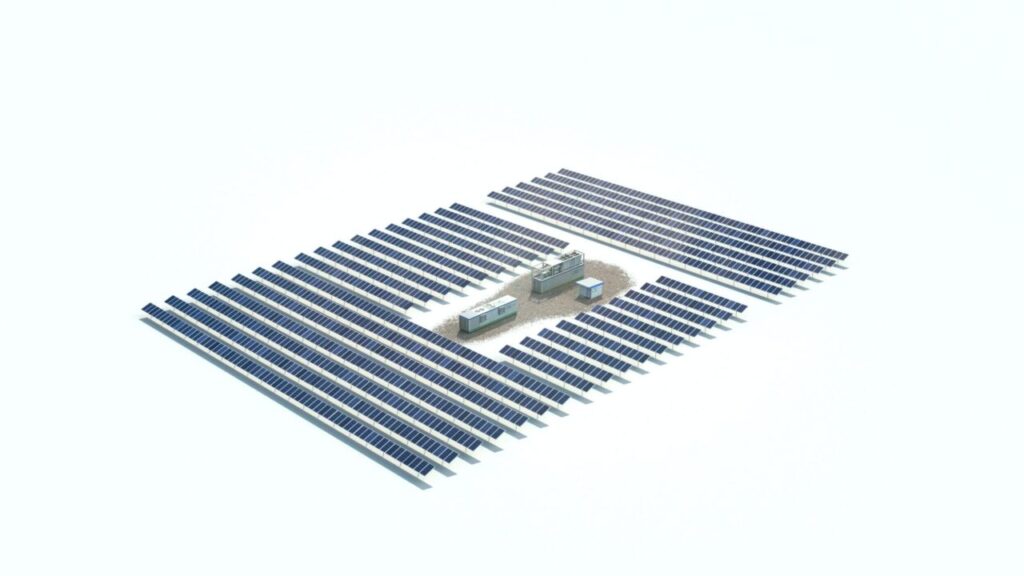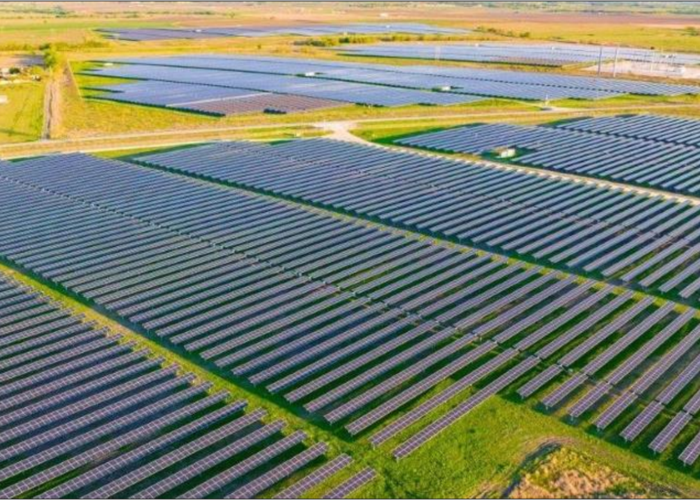
Leading Chinese module manufacturer JinkoSolar has entered into a strategic partnership with the Climate Impact Corporation (CIC) to supply its N-type TOPCon solar PV technology for a 10GW green hydrogen production project in the Northern Territory, Australia.
The partnership will see JinkoSolar supply its module technology for the Green Springs off-grid green hydrogen production project, which is aiming to produce 500,000 tonnes of green hydrogen annually. The site will use energy generated from solar PV within the CIC’s proprietary renewable hydrogen production modular technology. The project’s overall solar PV generation capacity has not been disclosed.
Try Premium for just $1
- Full premium access for the first month at only $1
- Converts to an annual rate after 30 days unless cancelled
- Cancel anytime during the trial period
Premium Benefits
- Expert industry analysis and interviews
- Digital access to PV Tech Power journal
- Exclusive event discounts
Or get the full Premium subscription right away
Or continue reading this article for free
The Green Springs site, located south of Tennant Creek, the seventh largest town in the territory and 500km north of Alice Springs in the heart of Australia, is situated in a region with strong solar irradiance. This makes PV technology suitable for the project instead of wind generation.
Each CIC module contains solar modules, atmospheric water generators, electrolysers and supporting infrastructure to produce green hydrogen as a standalone unit. This enables hydrogen to be produced entirely off-grid, thus decreasing the strain on the grid.
Deploying JinkoSolar’s solar PV technology is hoped to reduce the levelised cost of electricity (LCOE) for the Green Springs project and drive lower-cost green hydrogen – something that has been a stumbling block for the clean energy carrier in recent years. JinkoSolar confirmed that the two companies will seek to expand their cooperation to more regions around the world.
Another key aspect of CIC’s approach is the elimination of a supply of water for electrolysis. Using atmospheric water can ensure the technology can be deployed in water-scarce regions of the world, ramping up hydrogen production costs and minimising impact on supply to other critical sectors, particularly industry.
Speaking previously on the green hydrogen production project, David Green, chairman and co-founder of the CIC, said the company’s approach could unlock inland hydrogen production opportunities in solar-rich locations.
“Renewable hydrogen production requires a significant amount of energy and water, which aren’t often found together in places like Australia,” Green said.
“Rather than repeating the same approach, we’re looking to solve this challenge by creating modules that use Australia’s abundant solar resources combined with proven atmospheric water generation technology. It’s an approach that solves one of Australia’s biggest challenges in becoming a renewable hydrogen superpower, and we’re excited to bring it to market first in Australia.”
ARENA announces the winner of Australia’s first Hydrogen Headstart Program
The partnership between JinkoSolar and CIC is the latest significant development in Australia’s green hydrogen market.
At the end of last month, PV Tech reported that renewable energy investment firm Copenhagen Infrastructure Partners (CIP) would be the first recipient of the Hydrogen Headstart Program, with ARENA to provide financial support for a 1.5GW green hydrogen production project in Western Australia.
Under the programme’s first round, CIP will receive AU$814 million (US$510 million) to support the first stage of the Murchison Green Hydrogen Project. Stage one will feature 1,200MW of solar PV, 1,700MW of onshore wind, and a 600MW/1,200MWh (2-hour duration) battery energy storage system (BESS).
These technologies will help the Murchison project become a major producer and exporter of green hydrogen and its derivative, green ammonia. The site will include up to 1.5GW of electrolysis and produce 3,600 tonnes per day of ammonia. Annually, CIP expects the site to produce 1.8 million tonnes of ammonia.
The Australian government has made no secret of its ambitions regarding hydrogen and how to leverage its cat’s renewable energy resources to produce the clean energy carrier and export it to lucrative future markets such as Europe, the US, and Asia. This has been cemented via the country’s updated 2024 version of its National Hydrogen Strategy.
The strategy details that Australia aims to hit a base export target of 0.2 million tonnes of green hydrogen per year by 2030, with a stretch potential of 1.2 million tonnes per year.






